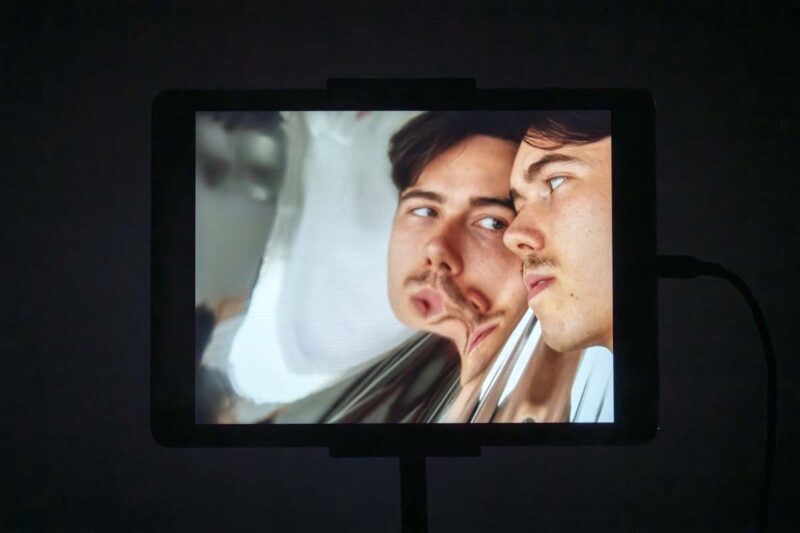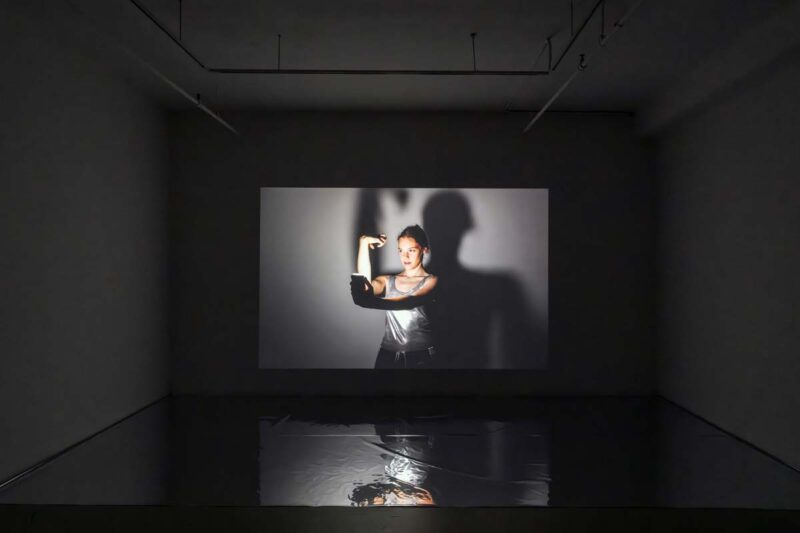[Summer 2024]
by Maxence Croteau
[EXCERPT]
In a rather paroxysmal context in which human-made destruction is scaling up to a hecatomb, the digital interface is inescapable in our lives. Some see it as a mutilated and mutilating way of life in which we are inter-isolated in a totalizing connectivity, reduced to being powerless spectators stupefied by an unceasing flow of information. As remote, disembodied orgiasts whose ethereal behaviours have the sole property of the violence of insignificance, we are, in this vision, ghosts in the network, cutting ourselves off in the indifferent instant of screens. We are virtuosos of the prehensile thumb tapping glassy rectangles, able only to comment, scroll, and “like” against a background of the brutal extinction of forms of alterity that richly texture the real world.
Conversely, some see a flourishing form of vertebrate life through the exercise of total freedom, the universal pooling of knowledge, and the collectivization of human potential. In this teleological and trans-humanist discourse, techno-scientific developments are liberating vectors of progress, advancement, and overcoming unjust conditions in the world. Beyond ethical questions and axiological polarizations surrounding the multidimensional digitization of our lives, Manon De Pauw’s exhibition Lueurs oniriques at Galerie B-312, with contribution by the choreographer Pierre-Marc Ouellette, deftly avoids the pitfall of adopting one or the other of these two broadly outlined extreme visions.
Lit only by screens, the gallery space is hollowed, reduced, and blurred in enveloping shades of twilight that suggest a lair. It is rare to feel that an exhibition “stops” us, forces us to settle in. Lueurs oniriques encloses us in a poignant, rare moment of pausing outside the bland weft of anaesthetizing instants. The exhibition places us not only in a lair but also in an “in-between,” an indeterminate interval. Physically positioned in the glow from projections and from the screens of tablets installed on tripods and the shadows of varying thicknesses that vacillate with the flow of the videos, our attention is lulled and becomes a floating epicentre textured by the moving clarity of projected dancing bodies and the shadow that encircles them.
Shimmering aluminum-like blankets are scattered on the gallery’s floor, their gleaming surfaces frozen into silvery waves that reflect the moving images of five dancers. With the “cold heat” that characterizes both metal and digital interactions, these specular membranes exude undulating, deformed reflections of meticulously indecisive gestures, projections of which occupy the walls and tablets in the room.
As often occurs in De Pauw’s work, it is the body – and particularly the hands – that is the subject of choreographies. Here, the bodies execute curving contractions, highly controlled rippling of joints. Although they are carefully directed, the gestures are uninterpretable – at once hypnotic, unrestrained, and concentrated. It’s a bit as if we were observing the very form that caught our attention in these moving images, as if it were incarnated in our bodies. In a way, all its fluctuations of concentration bring it into visibility and inscribe it in the very bodies that externalize its fragmentation. Removed from the regime of actions executed with an end in mind, without becoming an end in themselves, the performers’ gestures capture our attention by placing us in the oxymoronic space of an “in-between,” making us feel the presence of the absence to which we abandon that attention in our digital interactions.
The in-between space presented becomes an airlock between the glows and their reflections, an airtight area of luminous echoes in which gestures both fascinate and confuse. The theme of seventeenth-century nocturnes for keyboard known as “lessons in darkness” may be a curiously apt metaphor for these new contemporary forms to which De Pauw invites us. Four centuries later, however, the lessons for keyboard are played essentially by just two thumbs on glowing digital orthotics with the dilettante ramblings of our disillusioned distractions as their sheet music. If there is truly a “lesson” in Lueurs oniriques, it is only in the broader and more fragile sense that a lesson worthy of the name teaches us not to make conclusions or judgments.
Translated by Käthe Roth
—
Born in Tingwick, Quebec, Maxence Croteau is an artist who lives and works in Montreal. His work is concentrated in drawing, literature, and re-photography.
—
[ Complete issue, in print and digital version, available here: Ciel variable 126 – TRAJECTORIES ]
[ Complete article, in digital version, available here: Manon de Pauw, Lueurs oniriques – Maxence Croteau ]



